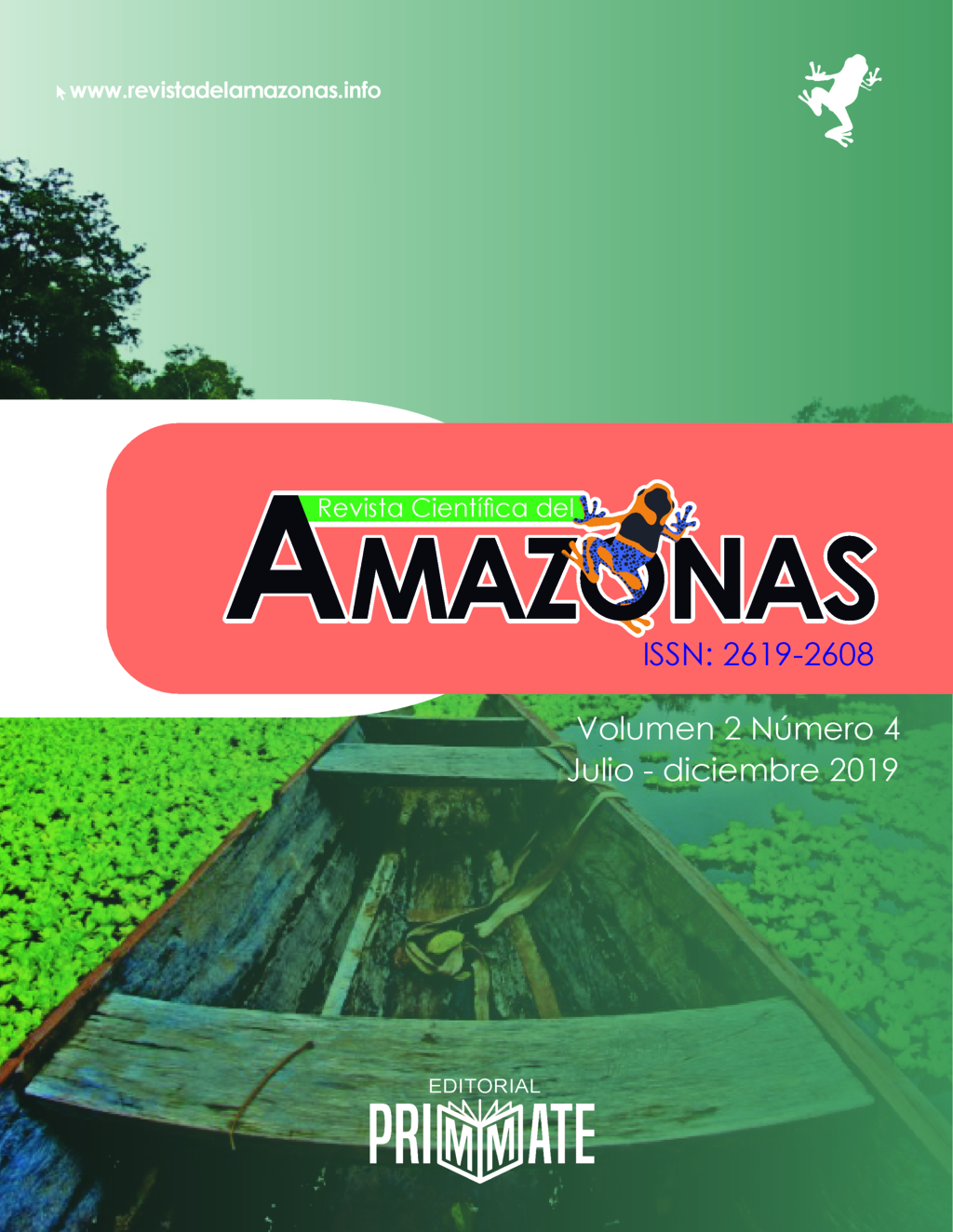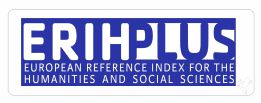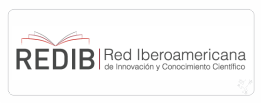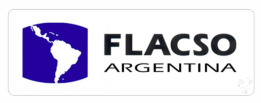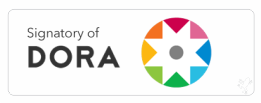Insecticidal activity of the essential oil of Ocimum sanctum var. cubensis in the control of Cochliomyia macellaria (Fabricius), under laboratory conditions
Keywords:
Ocimum sanctum, basil, insecticide, Cochliomyia macellaria, environmental impact.Abstract
The use of synthetic chemical insecticides for the control of insects is dangerous, affecting man and animals, contaminating the air, water, soil and the food chain, causing serious effects on health and promoting the development of resistance in several species of pests and vectors. All these problems increase the interest in the development of alternative insecticides with lower environmental impact. The objective of this investigation was to determine the insecticidal effect of the essential oil of Ocimum sanctum var. cubensis on the species of flies Cochliomyia macellaria (Fabricius). The essential oil was extracted from the aerial parts of the plant by the method of hydro-distillation in a Clevenger equipment. The colony of muscoid diptera was maintained according to the standard procedure of the Medical Entomology and Forensic Laboratory of the Oswaldo Cruz Institute - LEMEF / FIOCRUZ. To evaluate the effects of the essential oil on the post-embryonic development of the flies, six concentrations (5, 10, 25, 50, 75 and 100%) were tested in topical application 1?L / larva. The result was that in all the treatments the larvae showed lower body mass values when compared with the control groups. The analysis of the duration of the larval and pupal stages, as well as the period of neolarva-adult showed a behavior that establishes a difference between the treated groups and the control groups. The use of this essential oil did not influence the biological variable sexual reason. It is concluded that the essential oil of Ocimum sanctum var. cubensis showed insecticidal activity against the species Cochliomyia macellaria, affecting body mass parameters and duration of the neolarva-adult period, causing mortality at all tested concentrations, so it can be considered as a botanical insecticide with lower environmental impact for the alternative control of this species of flies.
Downloads
References
Aktar, W., Sengupta, D., Chowdhury, A. (2009). Impact of pesticides use in agriculture: their benefits and hazards. Interdisc Toxicol., 2(1), 1–12.
Almeida, J.E y Batista-Filho, A. (2001). Banco de Microorganismos Entomopatogênicos. Biotecnologia Ciência e Desenvolvimento., 20, 30-33.
Andrey, A., Gurtovenko, Jamshed, A. (2007). Modulating the Structure and Properties of Cell Membranes: The Molecular Mechanism of Action of Dimethyl Sulfoxide. J. Phys. Chem. B., 111, 10453-10460.
Arias, P. J., Gonzalo, A., Figueroa, C. I., Fischer, G. S., Robles Bermúdez, A, J., Rodríguez-Maciel, C., Lagunes-Tejeda, A. (2017). INSECTICIDAL, REPELLENT AND ANTIFEEDING ACTIVITY OF POWDER AND ESSENTIAL OIL OF Schinus molle L. FRUITS AGAINST Sitophilus zeamais (Motschulsky). Chilean J. Agric. Anim. Sci., ex Agro-Ciencia, 33(2), 93-104.
Arteaga, F. G., Rodríguez, J.G., Olivares J.L. (2012). COMPORTAMIENTO DE Cochliomyia hominivorax (COQUEREL) Y RELACIÓN CON OTROS AGENTES CAUSANTES DE MYASIS, EN UN CANTÓN DE LA REGIÓN DE MANABÍ, ECUADOR. Rev. Salud Anim. 34(1), 19-24.
Badii, H., Varela, S. (2008). Insecticidas Organofosforados: Efectos sobre la Salud y el Ambiente. Culcyt// Toxicología de Insecticidas, 5(28), 5-17.
Benitez, A. B., Herrera Moreno, J. F., Xotlanihua Gervacio, M. C., Bernal Hernández, Y.Y., Medina Díaz, I.M., Barrón-Vivanco, Briscia S.C., González Arias, A.C., Rojas García, A. E. (2018). PATRÓN DE USO DE PLAGUICIDAS Y BIOMARCADORES BIOQUÍMICOS EN UNA POBLACIÓN DE FUMIGADORES URBANOS. Rev. Int. Contam. Ambie., 34, 61-71.
Bernardino, H. U., Torres Aguilar, H., Sánchez Cruz, G., Reyes, L., Zapién Martínez, A. (2019). Uso de plaguicidas en el cultivo de mai?z en zonas rurales del Estado de Oaxaca, Me?xico. Rev. Salud ambient., 19(1), 23-31.
Buss, E. A., Park-Brown, S. G. (2002). Natural products for insect pest management. Gainesville: UF/IFAS,. Disponible en: http://edis.ifas.ufl.edu/IN197. Consultado en: 10 jun. 2019.
Cunha e Silva, S.L., de Carvalho, M.G., Andrade Gualberto, S., Santos Carneiro-Torres, D., Cruz Fernandes de Vasconcelos, K., Ferreira de Oliveira, N. (2010). Bioactivity of ethanolic stem extract of Croton linearifolius Mull. Arg. (Euphorbiaceae) on Cochliomyia macellaria (Diptera:Calliphoridae). Acta Veterinaria Brasilica, 4 (4), 252-258.
Cunha-E-Silva, S.L., Milward de Azevedo, E.M. (1999). Controle de qualidade de imaturos de Cochliomyia macellaria (Fabricius) (Diptera: Calliphoridae) em estoque. Parasitologia al Día, Santiago, 23, 1-2.
d’Almeida, J.M., Ferro, C.L., Fraga, M.B. (2001) Desenvolvimento pós-embrionário de Chrysomya putoria (Diptera: Calliphoride) em dietas artificiais. Acta Biol Leopoldensia, 23, 4–7.
del Puerto Rodríguez, A.M., Suárez Tamayo, S., Palacio Estrada, D.E. (2014). Effects of pesticides on health and the environment. Revista Cubana de Higiene y Epidemiología, 52 (3), 372-387.
Dutok, C.M. (2015). Segurança e eficácia de extratos obtidos de Pouteria mammosa (L.) cronquist para o controle de dípteros muscoides. Doutorado em Biodiversidade e Saúde. Fundação Oswaldo Cruz. Instituto Oswaldo Cruz.
Environews Forum. Killer environment. Environ Health Perspect. (1999), 107 (2): 62–63.
Eyer, F., Felgenhauer, N., Jetzinger, E., Pfab, R. y Zilker, T.R. (2004). Acute endosulfan poisoning with cerebral edema and cardiac failure. J. Toxicol. Clin. Toxicol., 42(6), 927-32.
Ferreira, M.J. (1983) Sinantropia de Calliphoridae (Diptera) em Goiania, Goiãs. Revista Brasileira de Biologia, 43, 199-210.
Fisher, R.A. (1930). The Genetical Theory of Natural Selection, Clarendon Press, Oxford.
Flores-Villegas, M.Y., González–Laredo, R.F., Prieto-Ruíz, J.A., Pompa-García, M., Ordaz-Díaz, L.A y Domínguez-Calleros, P.A. (2019). Efficiency of the vegetal extract of Datura stramonium L. as insecticide for the control of the sawfly. Madera y Bosques. 25 (1): 1-11.
FUNASA. (2001). Controle de Vetores: procedimentos de segurança. Brasília: Ministério da Saúde.
García-Rojas, J.C., Robles-Bermúdez, A., Cambero-Campos, O.J., Carvajal-Cazola, C. R., Peña-Sandoval, G. R. (2017). Metabolic resistance to pesticides. Revista Bio Ciencias, 4(6), Article ID 04.06.01, 1- 16.
Guimarães, J.H., Papavero, N. & do Prado, A.P. (1983). As miíases na região neotropical (identificação, biologia, bibliografia). Revista Brasileira de Zoologia, 1, 239-416.
Guimarães, J.H., Papavero, N. (1999). Myiasis Caused by Facultative Parasites. In: Myiasis in man and animals in the Neotropical Region. Plêiade, Bibliographic database, São Paulo.35p.
Gullan, P.J., Cranston, P.S. (2007). Os Insetos: um resumo de entomologia. São Paulo, Rocca.
Hemingway, J., Ranson, H. (2000). Insecticide resistance in insect vectors of human disease. Annu. Rev. Entomol. 45:371–391.
Isman, M.B. (1997). Neem and other botanical insecticides: barriers to commercialization. Phytoparasitica, Rehovot., 25(4), 339- 344.
Kathrina, G.A., Antonio, L.O.J. (2004). Controle biológico de insectos mediante extractos botánicos. In: Carball, M.; Guaharay, F. (Ed.). Control biológico de plagas agrícolas. Managua: CATIE, p. 137-160. (Serie Técnica. Manual Técnico/CATIE, 53).
Khater, F., Khater, D. F. (2009). The insecticidal activity of four medicinal plants against the blowfly Lucilia sericata (Diptera: Calliphoridae). International Journal of Dermatology, 48, 492– 497.
Klaassen, C.D., Rozman, K. (1991). Absortion, distribuition and excretion of toxicants. In: Casarrett; Doull's Toxicology: The basic science of poisons. New York: Mc Graw-Hill.
Litjens, P., Lessinger, A. C., Lima de Azeredo Espin, A. M. (2001). Characterization of the screwworm flies Cochliomyia hominivorax and Cochliomyia macellaria by PCR-RFLP of mitochondrial DNA. Medical and Veterinary Entomology 15, 183-188.
López Martínez, G., Paredes Céspedes, D.M., Rojas García, A.E., Medina Díaz, I.M., Barrón-Vivanco Briscia, S.C., González Arias, A.C., Bernal Hernández, Y.Y. (2018). IMPLICACIÓN DEL CONTEXTO SOCIOECONÓMICO EN LA EXPOSICIÓN A PLAGUICIDAS EN JORNALEROS HUICHOLES. Rev. Int. Contam. Ambie., 34, 73-80.
Mathew, N., Anitha, M.G., Bala, T.S.L., Sivakumar, S.M., Narmadha, R. y Kalyanasundarum, M. (2009). Larvicidal activity of Saraca indica, Nystanthes arbortristis and Clitoria ternatea against three mosquito vector species. Parasitology Res. 104: 1017–1025.
Mendonça, P.M., Lima, M.G., Albuquerque, L.R., Carvalho, M.G y Queiroz, M.M. (2011). Effects of latex from “Amapazeiro” Parahacornia amapa (Apocynaceae) on blowfly Chrysomya megacephala (Diptera: Calliphoridae) post-embryonic development. Veterinary Parasitology, 178,379-382.
Molina, S.C., Mendonça, P.M., Reyes, B., Queiroz, M.M., Escalona, J.C., García, J., Guisado, F. (2018). Effects of Persea americana Mill. seed extracts on the postembryonic development of Musca domestica (Diptera: Muscoide). Journal of Pharmacy & Pharmacognosy Research, 6 (2), 96-107.
Mo?rner, J., Bos, R., Fredrix, M. et al. (?2002)?. Inter-Organization Programme for the Sound Management of Chemicals, World Health Organization. Reducing and eliminating the use of persistent organic pesticides: guidance on alternative strategies for sustainable pest and vector management / Johan Mo?rner, Robert Bos and Marjon Fredrix. Geneva: IOMC. https://apps.who.int/iris/handle/10665/67337. Consultado en: 6 mayo 2019.
Needham, D. (1929). THE CHEMICAL CHANGES DURING THE METAMORPHOSIS OF INSECTS. https://doi.org/10.1111/j.1469-185X.1929.tb00613.
Notman, R., Noro, M.G., O’Malley, B., Anwar, J. (2006). Molecular basis for dimethylsulfoxide (DMSO) action on lipid membranes. J Am Chem Soc., 128, 13982–1398.
Obeng-Ofori, D., Reichmuth, Ch. (1997). Bioactivity of eugenol, a major component of essential oil of Ocimum suave (Wild.) against four species of stored-product Coleoptera. International Journal of Pest Management., 43,89-94.
Pattanayak, P., Behera, P., Das, D., Panda, S.K. (2010). Ocimum sanctum Linn. A reservoir plant for therapeutic applications: An overview. Pharmacogn Rev., 4, 95–105.
Peter, R.J., Van den Bossche, P., Penzhorn, B.L., Sharp, B. (2005). Tick, fly, and mosquito control—Lessons from the past, solutions for the future. Vet Parasit., 132, 205–215.
Queiroz, M.M., Milward-de-Azevedo, E.M. (1991). TÉCNICAS DE CRIAÇÃO E ALGUNS ASPECTOS DA BIOLOGIA DE CHRYSOMYA ALBICEPS (WIEDEMANN) (DIPTERA, CALLlPHORIDAE), EM CONDiÇÕES DE LABORATÓRIO. Revista bras. Zool., 8 (1/2/3/4), 75-84.
Ritter, L., Solomon, K.R., Forget, J., Stemeroff, M., O’leary C. (1995). A. Review of Selected Persistente Organic Pollutants. Draft Interim Report: International Program on Chemical Safety, WHO, Geneva, Switzerland.
Silva, D.C., Aguiar, C.V., da Cunha e Silva, S.L., Carvalho, R.P., Gonzalo, E.M. (2012). Desenvolvimento pós-embrionário de Cochliomyia macellaria (Fabricius) (Diptera: Calliphoridae), criada em duas dietas naturais, sob condições controladas. Biotemas, 25 (4), 131-137.
Sobrino, J., Fernandez Valero, A., Ortega Mesequer, I., Castellanos González, L. (2016). Insecticide effect of the extract of Furcraea hexapetala (Jacq.) Urban on Plutella xylostella L. Centro Agrícola, 43 (1), 85-90.
Sukontason, K.L., Narongchal, P., Sripakdee, D., Boonchu, N., Chaiwong, T., Ngern-Klun, R., Piangjai, S., Sukontason, K. (2005) First report of human myiasis caused by Chrysomya megacephala and Chrysomya rufifacies (Diptera: Calliphoridae) in Thailand, and its implication in forensic entomology. Journal of Medical Entomolgy; 42: 702–704.
Tawatsin, A., Asavadachanukorn, P., Thavara, U., Wongsinkongman, P., Bansidhi, J., Boonruad, T., Chavalit-tumrong, P., Soonthornchareonno, N., Komalamisra, N., Mir, S.M. (2006). Repellency of essential oils extracted from plants in Thailand against four mosquito vectors (Diptera: Culicidae) and oviposition deterrent effects against Aedes aegypti (Diptera: Culicidae). Southeast Asian J Trop Med Public Health.; 37(5): 915-931.
Thomas, A., Ferrer, J.R. (2015). Primer reporte de la especie exótica Chrysomya rufifacies Macquart 1844 y nuevos registros de C. putoria Wiedemann 1818 (Diptera: Calliphoridae) para Venezuela. Revista de invasiones biológicas de América Latina y el Caribe; 1: 4-9.
Thomas, D.B. (1993). Fecundity and oviposition in laboratory colonies of the screwworm fly (Diptera, Calliphoridae). Jounal of Economic Entomology, 86 (5), 1464-1472.
Vieira, P.C., Mafezoli, J., Biavatti, M.W. (2001). Inseticidas de Origem Vegetal. In: Ferreira, J. T. B.; Corrêa, A. G.; Vieira, P. C. (org.). Produtos Naturais no Controle de Insetos. 1ª ed. São Carlos: Editora da UFSCar. Cap. 2: 23 – 45.
WHO. (1990). Public Health Impact of Pesticides Used in Agriculture. World Health Organization, Geneva, 88.
Zaragoza-Bastida, A., Valladares-Carranza, B., Ortega-Santana, C., Zamora-Espinosa, J., Velázquez-Ordoñez, V., Aparicio-Burgos, J. (2016). Implications of the use of organochlorine in the environment, and public health. AbanicoVet., 6 (1), 43-55.
Zumpt, F. (1965). Myiasis in man and animals in the Old World. Butterworths, London. 267p.
Zurita, H. et al. (2017). Eficiencia del uso de plantas insecticidas en el control del gorgojo del maíz, Sitophilus zeamais Motschulsky, (Coleoptera: Curculionidae). Investigación Agraria, 19 (2),120-126.

